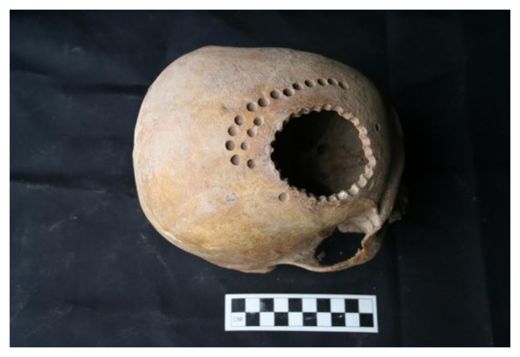
However, surgically opening a person's skull isn't a recent phenomenon, as a new study in the American Journal of Physical Anthropology has revealed that people living in ancient Peru spent time learning how to conduct such a delicate operation.
In the new study, University of California, Santa Barbara researcher Danielle Kurin described how native people living in Peru 1,000 years ago surgically removed a section of the cranium, a process called trepanation, for a variety of reasons.
"When you get a knock on the head that causes your brain to swell dangerously, or you have some kind of neurological, spiritual or psychosomatic illness, drilling a hole in the head becomes a reasonable thing to do," said Kurin, a visiting assistant professor at UCSB and specialist in forensic anthropology.
In her study, Kurin notes trepanations first appeared between 200 and 600 A.D. The medical procedure continued until Spanish conquistadors put an end to the practice in the early 16th century.
"For about 400 years, from 600 to 1000 AD, the area where I work - the Andahuaylas - was living as a prosperous province within an enigmatic empire known as the Wari," she said. "For reasons still unknown, the empire suddenly collapsed."
"But it is precisely during times of collapse that we see people's resilience and moxie coming to the fore," Kurin added. "In the same way that new types of bullet wounds from the Civil War resulted in the development of better glass eyes, the same way IED's are propelling research in prosthetics in the military today, so, too, did these people in Peru employ trepanation to cope with new challenges like violence, disease and depravation 1,000 years ago."
According to Kurin, these ancient surgeons spent time trying different techniques and experimenting with different ways of opening up the skull. When a patent didn't survive the procedure, their bodies were often used for medical research.
"The idea with this surgery is to go all the way through the bone, but not touch the brain," Kurin said. "That takes incredible skill and practice."
"As bioarchaeologists, we can tell that they're experimenting on recently dead bodies because we can measure the location and depths of the holes they're drilling," she added. "In one example, each hole is drilled a little deeper than the last. So you can imagine a guy in his prehistoric Peruvian medical school practicing with his hand drill to know how many times he needs to turn it to nimbly and accurately penetrate the thickness of a skull."
While having a hole drilled in your head may seem like torture, Kurin said evidence pointed to these procedures being medical in nature.
"We can see where the trepanations are. We can see that they're shaving the hair. We see the black smudge of an herbal remedy they put over the wound," she noted. "To me, those are signs that the intention was to save the life of the sick or injured individual."
Kurin's work in the Andahuaylas allowed her to find and examine the surgically altered skulls in the context of where and how they were buried. She used radiocarbon dating, multi-isotopic testing and insect casings to learn additional details about the remains.
"These ancient people can't speak to us directly, but they do give us information that allows us to reconstruct some aspect of their lives and their deaths and even what happened after they died," Kurin said. "Importantly, we shouldn't look at a state of collapse as the beginning of a 'dark age,' but rather view it as an era that breeds resilience and foments stunning innovation within the population."



I wonder if the doctor said 'oops' when he drilled down too far ;o lol